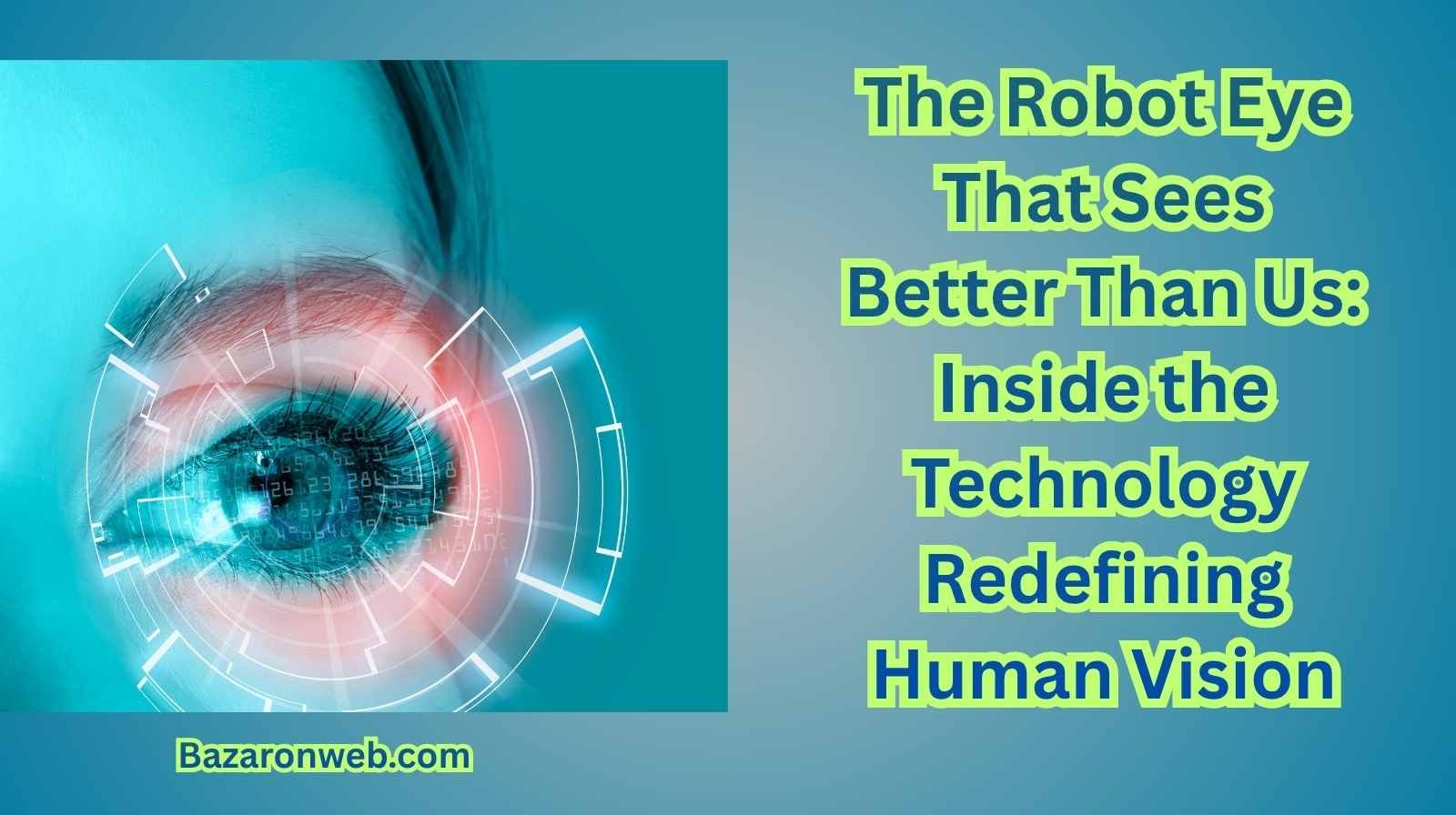Category
Popular Articles
- AI (12)
- Android (38)
- App Suggest (4)
- Apple (15)
- Apple TV (2)
- Bluetooth (3)
- Cars (2)
- ChatGpt (1)
- Chrome (2)
- Did you know? (1)
- E-Commerce News (1)
- Ecommerce Websites business (7)
- Electronics Shopping (5)
- Fashion Tips (3)
- Gaming (4)
- Google Gemini (3)
- Hair Care Tips (2)
- How to (13)
- iCloud (1)
- Infotainment System (1)
- Iphone (101)
- Job Posting (1)
- Lifestyle (3)
- Mac (20)
- Mobile Games (1)
- Netflix (1)
- Online Shopping Websites (2)
- Personal Finance Management (3)
- Product Reviews (3)
- Roku TV (4)
- Samsung (9)
- Shopping Tips (10)
- Spotify (1)
- Tech (92)
- Windows 11 (18)
- Zero Waste (3)
Discounted Products
-
 Leo Creation 144 TC Cotton Double Jaipuri Prints Flat Bedsheet(Pack of 1, Blue, Gree, Red, Grey, Light Grey)
Leo Creation 144 TC Cotton Double Jaipuri Prints Flat Bedsheet(Pack of 1, Blue, Gree, Red, Grey, Light Grey)
₹2,999.00Original price was: ₹2,999.00.₹329.00Current price is: ₹329.00. -
 Home Garage 210 TC Cotton King Floral Fitted (Elastic) Bedsheet(Pack of 1, Grey)
Home Garage 210 TC Cotton King Floral Fitted (Elastic) Bedsheet(Pack of 1, Grey)
₹999.00Original price was: ₹999.00.₹299.00Current price is: ₹299.00. -
 Goodrik 140 TC Cotton Double 3D Printed Flat Bedsheet(Pack of 1, Brown)
Goodrik 140 TC Cotton Double 3D Printed Flat Bedsheet(Pack of 1, Brown)
₹499.00Original price was: ₹499.00.₹229.00Current price is: ₹229.00. -
 GLOBALSHOP 350 TC Microfiber Double Floral Flat Bedsheet(Pack of 1, Multicolor)
GLOBALSHOP 350 TC Microfiber Double Floral Flat Bedsheet(Pack of 1, Multicolor)
₹1,250.00Original price was: ₹1,250.00.₹263.00Current price is: ₹263.00. -
 RisingStar 250 TC Microfiber King Printed Fitted (Elastic) Bedsheet(Pack of 1, FITTED-ROUND-CIRCLES-PREMIUM)
RisingStar 250 TC Microfiber King Printed Fitted (Elastic) Bedsheet(Pack of 1, FITTED-ROUND-CIRCLES-PREMIUM)
₹2,299.00Original price was: ₹2,299.00.₹299.00Current price is: ₹299.00. -
 Home Garage 210 TC Cotton King Floral Fitted (Elastic) Bedsheet(Pack of 1, Fitted Black Green)
Home Garage 210 TC Cotton King Floral Fitted (Elastic) Bedsheet(Pack of 1, Fitted Black Green)
₹1,299.00Original price was: ₹1,299.00.₹299.00Current price is: ₹299.00. -
 Home Garage 180 TC Cotton King 3D Printed Flat Bedsheet(Pack of 1, White)
Home Garage 180 TC Cotton King 3D Printed Flat Bedsheet(Pack of 1, White)
₹999.00Original price was: ₹999.00.₹229.00Current price is: ₹229.00. -
 Home Sizzler 153 cm (5 ft) Polyester Room Darkening Window Curtain (Pack Of 2)(Floral, Maroon)
Home Sizzler 153 cm (5 ft) Polyester Room Darkening Window Curtain (Pack Of 2)(Floral, Maroon)
₹799.00Original price was: ₹799.00.₹299.00Current price is: ₹299.00. -
 Panipat Textile Hub 152.4 cm (5 ft) Polyester Window Curtain (Pack Of 2)(Solid, Aqua)
Panipat Textile Hub 152.4 cm (5 ft) Polyester Window Curtain (Pack Of 2)(Solid, Aqua)
₹1,899.00Original price was: ₹1,899.00.₹299.00Current price is: ₹299.00. -
 Home Sizzler 214 cm (7 ft) Polyester Semi Transparent Door Curtain (Pack Of 2)(Floral, Maroon)
Home Sizzler 214 cm (7 ft) Polyester Semi Transparent Door Curtain (Pack Of 2)(Floral, Maroon)
₹1,199.00Original price was: ₹1,199.00.₹399.00Current price is: ₹399.00. -
 Home Sizzler 153 cm (5 ft) Polyester Room Darkening Window Curtain (Pack Of 2)(Floral, Brown)
Home Sizzler 153 cm (5 ft) Polyester Room Darkening Window Curtain (Pack Of 2)(Floral, Brown)
₹799.00Original price was: ₹799.00.₹299.00Current price is: ₹299.00. -
 Stella Creations 214 cm (7 ft) Polyester Room Darkening Door Curtain (Pack Of 2)(Abstract, Brown)
Stella Creations 214 cm (7 ft) Polyester Room Darkening Door Curtain (Pack Of 2)(Abstract, Brown)
₹1,299.00Original price was: ₹1,299.00.₹449.00Current price is: ₹449.00. -
 Homefab India 152.5 cm (5 ft) Polyester Room Darkening Window Curtain (Pack Of 2)(Floral, Light Blue)
Homefab India 152.5 cm (5 ft) Polyester Room Darkening Window Curtain (Pack Of 2)(Floral, Light Blue)
₹1,199.00Original price was: ₹1,199.00.₹319.00Current price is: ₹319.00. -
 Urban Home 214 cm (7 ft) PVC Transparent Door Curtain Single Curtain(Solid, Off White)
Urban Home 214 cm (7 ft) PVC Transparent Door Curtain Single Curtain(Solid, Off White)
₹699.00Original price was: ₹699.00.₹203.00Current price is: ₹203.00. -
 Panipat Textile Hub 213 cm (7 ft) Polyester Door Curtain (Pack Of 2)(Solid, Brown)
Panipat Textile Hub 213 cm (7 ft) Polyester Door Curtain (Pack Of 2)(Solid, Brown)
₹1,199.00Original price was: ₹1,199.00.₹349.00Current price is: ₹349.00.
Affiliate Links
Promotion

Hey friends, Jessica here. If you’re like me, whenever I see a clever new tech breakthrough, I start imagining how it might affect our everyday lives. So when I came across the recent research on robot eyes—yes, those are devices built to mimic or even exceed human vision—I was hooked. The idea that machines could one day see better than we do is no longer science fiction; it’s becoming reality.
In this article, we’ll dive deep into the emerging robotic-eye technologies, why they’re considered better than human eyesight in some respects, how they’re built, and what the implications are across industries. Whether you’re into robotics, healthcare, self-driving cars, or simply fascinated by futuristic tech, this is your comprehensive guide.
What Does “Better than Human Sight” Actually Mean?
Before we talk about specifics, we should clarify what it means for a robot eye to be “better” than a human eye. Human eyesight is impressive: we can adapt to changing light, perceive depth, resolve fine detail, and interpret scenes in real-time. But it also has limitations. Robot eyes claim to outperform humans in one or more of the following areas:
- Adaptation speed: adjusting to bright or dark environments faster
- Sensitivity: detecting more photons, wider spectrum of light
- Resolution and data efficiency: capturing useful data with less processing
- Durability and specialization: vision that doesn’t degrade like biological eyes
- Beyond‐human capability: seeing in wavelengths humans cannot (infrared/ultraviolet)
For example, a recent study reported that a quantum‐dot sensor designed at Fuzhou University could adapt to extreme changes in lighting in about 40 seconds, outperforming human adaptation in the dark. Another research article described a vision system that triggers only when a change in brightness occurs—rather than processing full image frames continuously—making it far more efficient than typical camera systems.
So “better” means machines can surpass our natural limits in certain target tasks—and that opens up many exciting possibilities.
Key Research Breakthroughs
Let’s explore three standout research projects that illustrate how robotic eyes are being built to outperform human vision.
1. Quantum-Dot Vision Sensor from Fuzhou University
In July 2025 a paper published in Applied Physics Letters detailed a sensor that uses lead sulfide quantum dots embedded in polymer and zinc-oxide layers. (AIP Publishing LLC)
Here’s how it works: the quantum dots act like sponges for light—they trap charges when light hits them, then release those charges when needed—mimicking how rods and cones in the human retina adapt to dark or bright conditions. The result? The sensor adapts to lighting changes faster than human eyes and filters out redundant visual information, focusing only on relevant changes.
What makes this significant: traditional digital cameras capture every pixel at every frame, generating huge amounts of data. This quantum sensor captures only changes, reducing data load and power consumption while increasing responsiveness.
2. LENS / Speck Visual Sensor System
Another research piece from the company SynSense and collaborators described a visual sensor system (“Speck”) that uses a chip+sensor combo to mimic human eye behavior more closely. Each pixel ‘wakes up’ only when brightness changes. This means less data, less power, and efficient real-time operation for robots or drones.
The study commented: “It is, frankly, insane that we got used to using cameras for robots” because conventional systems are so inefficient. This advances robotic vision in environments where power, weight, or bandwidth are limited—such as drones, space robots, or autonomous vehicles.
3. Beyond Human Spectrum and Structure
Other projects have attempted to build “bionic eyes” that not only mimic but exceed human capability. One example: a prototype with nanotube sensor density six times that of the human retina, capable of seeing into wavelengths beyond visible light (near infrared) and adapting faster.
Another broader review notes that robotic vision systems often still only imitate parts of human vision. But when engineered for specialization rather than mimicry, they can surpass human limits.
How Robot Eyes Are Built: Technologies & Principles
Here are the major technical components and design principles behind these next-generation robotic eyes.
a) Photodetectors and Quantum Dots
These are the light-sensitive parts of the system. Quantum dots—nanoscale semiconductors—absorb photons and convert them to electrical signals. Engineering these for fast response and dynamic adaptation is key. (See the Fuzhou University study above.)
b) Dynamic Adaptation Mechanisms
Human eyes adapt via iris adjustment, pupil size change, rods/cones behavior. Robotic analogues might include variable-aperture lenses, adaptive photodetector sensitivity, or charge-trapping techniques that adjust based on light history.
c) Event-Driven Vision / Change Detection
Rather than sampling full frames continuously, some robotic systems use event-driven detection—only when a pixel changes brightness or motion occurs. This leads to lower power consumption and faster reaction. (SynSense study.)
d) On-Device Intelligence & Neuromorphic Processing
Rather than sending raw data to a cloud server, some robotic eye systems integrate local processing (retina-style) that filters and preprocesses visual data before higher-level interpretation. (Purdue University research.) (purdue.edu)
e) Extended Spectrum & Multispectral Vision
By designing sensors sensitive to infrared, ultraviolet, or even terahertz wavelengths, these robotic eyes can “see” more than humans. Example: prototype capable of near-infrared detection.
f) Biomimetic Structure and Faster Movement
Some robotic eyes build lenses, iris, and retina analogues that move or focus automatically, sometimes faster than human saccades. For example, the EC-Eye (ElectroChemical Eye) biomimetic prototype had adaptation times of 30-40 ms, compared to 40-150 ms for human eyes.
Why This Matters: 5 Key Application Areas
As someone who reviews tech and leads a family, I find five major areas where these robotic eye technologies could make a difference.
1. Autonomous Vehicles & Robotics
Faster adaptation to bright and dark conditions, efficient perception, lower power consumption—all are critical for drones, self-driving cars, and industrial robots. The quantum-dot sensor and event-driven vision systems significantly reduce data loads and improve response time.
2. Healthcare & Prosthetics
Bionic eye systems for the visually impaired are already in development. But these newer robotic eyes could enhance prosthetic vision beyond human norms—e.g., detecting wavelengths humans cannot, adapting quickly to changing light (important in surgery or for visually impaired individuals).
3. Surveillance & Security
Robotic eyes with faster adaptation, higher resolution, and extended spectrum could improve monitoring systems. Night-vision, low-light detection, and reliability over time make them ideal for critical security applications.
4. Augmented Reality / Mixed Reality
For AR/VR systems to work seamlessly, vision sensors must be fast, efficient, and accurate. Robotic eyes could help wearable devices interpret surroundings better, recognize gestures, and respond to environment changes quickly.
5. Scientific, Space & Exploration Missions
When devices go into space, underwater, or hazardous zones, conventional cameras might fail. Robotic eyes engineered for extreme conditions—change detection, low power, high sensitivity—are ideal. Some studies already suggest using such systems in space robots.
Challenges and Limitations
Of course, we are not yet at “robot eyes everywhere.” There are several hurdles to overcome:
• Integration with Brain / Visual Cortex
Even if a robotic eye captures better data, making sense of it—and doing so in real time—is a huge challenge. For prosthetics, connecting vision to human neural processing is complex.
• Cost and Manufacturing
Quantum-dot sensors, adaptive lenses, neuromorphic chips—they aren’t cheap. Scaling these for consumer markets takes time.
• Power and Heat
Although some systems use event-driven detection to reduce power, processing high-resolution data, sensors, and on-device AI still draw power. In mobile robots or wearables, this matters.
• Standardization and Interfaces
Human vision has years of evolutionary optimization. Robotic eyes must fit into larger systems—robot brains, AI perception stacks, mechanical mounts. This requires standardization.
• Ethical and Privacy Considerations
When robotic vision becomes “better than human,” privacy, surveillance, and ethics issues come to the fore. Better performance can also mean greater misuse risk.
My Take: What This Means For Everyday Tech
Now, as someone who uses tech daily—smartphones, wearables, cameras—what should you take away from this? Here are my thoughts:
- Smart-camera phones: The same sensors being developed for robotic eyes could trickle into consumer devices. Expect camera modules that adapt faster, handle low light better, and even capture invisible wavelengths.
- Smart home security: Robotic-eye tech may make home cameras smarter—detecting motion in more intelligent ways, adapting faster to lighting, and filtering irrelevant data.
- Augmented reality & lifestyle: When wearable devices have better vision sensors, interactions get smoother—hands-free control, better gesture recognition, and more seamless interfaces.
- Accessibility: For users with visual impairments, advanced bionic vision could become a meaningful assistive option in the next decade.
- Robotics and automation: In the next 5-10 years, robots that can “see” more like humans or even better will become more common—from warehouse bots to agricultural drones.
What to Watch For Next
If you’re curious and want to keep tabs on developments, here are forward-looking research directions:
- Integration of robotic eyes into full bionic systems: eyes + optic nerve + brain analogues
- Expansion of spectrum detection: near-infrared, ultraviolet, multispectral imaging
- Ultra-efficient neuromorphic processing at the sensor level (reducing data load)
- Commercialization for consumer electronics: faster camera modules for phones, wearables
- Ethical frameworks for super-vision systems: privacy, regulation, misuse prevention
Final Thoughts
When I first started reading about robotic vision, I was skeptical—could anything really beat the human eye? But the research paints a different picture. In specific metrics—adaptation speed, change detection efficiency, spectrum range—these robotic eyes are already surpassing human vision.
That flip from “mimic human vision” to “exceed human vision” is significant. It means we’re moving from making machines that think like us, toward machines that see differently and potentially better. And that evolution will affect how we design devices, robots, healthcare technologies—and ultimately, how we live and interact with the world.
If you’re a tech-lover like me, keep an eye on this field—pun intended. The “eyes” of robots might soon become smarter than ours, and that means the devices around you will get smarter too.
Until next time, stay curious, and enjoy looking ahead.
— Jessica
Written by Bazaronweb
Latest Tech Articles
- 5 Ways to Backup and Restore Registry Settings in Windows

- iMessage Not Syncing Between iPhone & Mac? 8 Proven Ways to Fix Account & Device Issues

- Outlook Not Receiving Emails? 8 Proven Fixes for Windows, Mac & Mobile

- Zoom Not Connecting? 7 Ways to Fix Meeting Join Errors on Windows & Mac

- Microsoft Teams Not Opening? 5 Proven Fixes to Restart Your Workspace

Products
-
![Apple Watch Ultra 3 [GPS + Cellular 49mm] Running & Multisport Smartwatch w/Rugged Titanium Case w/Black Titanium Milanese Loop - M. Satellite Communications, Advanced Health & Fitness Tracking](https://bazaronweb.com/retailstores/wp-content/uploads/2025/09/apple-watch-320x320.jpg) Apple Watch Ultra 3 [GPS + Cellular 49mm] Running & Multisport Smartwatch w/Rugged Titanium Case w/Black Titanium Milanese Loop - M. Satellite Communications, Advanced Health & Fitness Tracking
Apple Watch Ultra 3 [GPS + Cellular 49mm] Running & Multisport Smartwatch w/Rugged Titanium Case w/Black Titanium Milanese Loop - M. Satellite Communications, Advanced Health & Fitness Tracking
-
 Apple iPad mini (A17 Pro): Apple Intelligence, 8.3-inch Liquid Retina Display, 256GB, Wi-Fi 6E, 12MP Front/12MP Back Camera, Touch ID, All-Day Battery Life — Purple
Apple iPad mini (A17 Pro): Apple Intelligence, 8.3-inch Liquid Retina Display, 256GB, Wi-Fi 6E, 12MP Front/12MP Back Camera, Touch ID, All-Day Battery Life — Purple
-
 Apple AirPods Max Wireless Over-Ear Headphones, Active Noise Cancelling, Transparency Mode, Personalized Spatial Audio, Dolby Atmos, Bluetooth Headphones for iPhone – Space Gray
Apple AirPods Max Wireless Over-Ear Headphones, Active Noise Cancelling, Transparency Mode, Personalized Spatial Audio, Dolby Atmos, Bluetooth Headphones for iPhone – Space Gray
-
 Apple AirPods Pro 2 Wireless Earbuds, Active Noise Cancellation, Hearing Aid Feature, Bluetooth Headphones, Transparency, Personalized Spatial Audio, High-Fidelity Sound, H2 Chip, USB-C Charging
Apple AirPods Pro 2 Wireless Earbuds, Active Noise Cancellation, Hearing Aid Feature, Bluetooth Headphones, Transparency, Personalized Spatial Audio, High-Fidelity Sound, H2 Chip, USB-C Charging
-
 Leo Creation 144 TC Cotton Double Jaipuri Prints Flat Bedsheet(Pack of 1, Blue, Gree, Red, Grey, Light Grey)
Leo Creation 144 TC Cotton Double Jaipuri Prints Flat Bedsheet(Pack of 1, Blue, Gree, Red, Grey, Light Grey)
₹2,999.00Original price was: ₹2,999.00.₹329.00Current price is: ₹329.00.
Leave a Reply